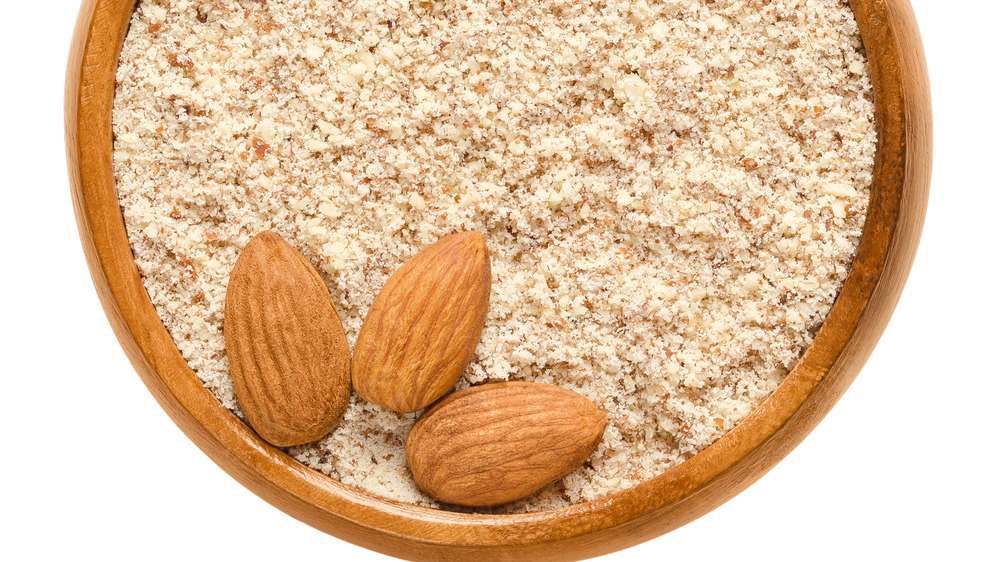The Real Difference Between Almond Meal And Almond Flour
They both start out the same way – as whole almonds that are ground down to a powder. And there are qualities that are similar and those that set almond flour apart from almond meal. Almond flour offers 170 calories, 15 grams of fat, 6 grams of protein, 6 grams of carbs, and 2 grams of fiber for a quarter-cup serving (via Women's Health). Dietitian Cara Harbstreet, RD, says the nutritional value of almond meal is almost identical. Both are also rich in Vitamin E, which can protect your cells from radical damage, prevent blood clots in arteries, and boost your immune system.
Almond meal is ground from almonds, and as The Kitchn points out, it includes almond skins and has a coarser texture than almond flour. It can be used for baking cookies and quick bread, and due to its texture, almond meal can replace breadcrumbs when coating meat or serve as a topping for vegetables and casseroles. More often than not, almond flour is made with blanched (or no-skin) almonds, while almond meal can be made either of whole or no-skin/blanched almonds (via Very Well Fit).
Bob's Red Mill, which makes both almond flour and almond meal, also offers the distinction that almond meal is made of whole raw almonds, but the terms – at least for this producer – are interchangeable. While "almond meal" and "almond flour" are terms that some cooking resources treat as synonymous, one can't always be used as a substitute for the other
When not to use almond flour and almond meal interchangeably
Almond flour is best used to make gluten-free "quick-breads", or breads that use baking powder and baking soda instead of yeast to rise (via Baker Bettie). As such, it can be used to make gluten-free muffins, pancakes, and certain types of breads like pumpkin or banana. Almond flour has a value of less than one on the glycemic index, which means it won't raise your blood glucose level. It's also higher in protein, low in starch, makes for a gluten-free alternative to wheat for some recipes, and can be used interchangeably with wheat flour.
If you accidentally bought almond meal instead of almond flour, don't be tempted to do a swap, since almond meal can't be used as a substitute in foods that might normally require an actual gluten flour. Bear in mind that if you're going to attempt to bake with almond meal you'll also need more eggs in order to compensate for the lack of gluten. Very Well Fit also warns that a cup of wheat flour and a cup of almond meal don't have the same weight per volume, noting that a cup of wheat flour weighs three ounces while a cup of almond flour weighs almost four. As such, it is important to use recipes that have already been adapted to use with almond flour.

